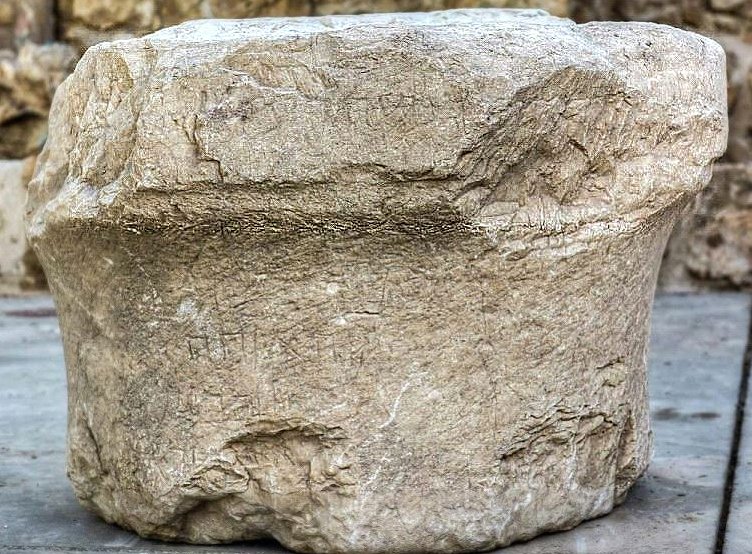Life Of Galilean Sages Described On 1,800-Year-Old Hebrew Inscriptions Can Confirm Ancient Legends
AncientPages.com - Two inscription of great historical importance have been found in the Western Galilee town of Peqi’in in Israel.
The 1,800-year-old inscriptions were found in in the courtyard of an ancient synagogue. Archaeologists and historians find the text highly significant because it tells about the lives of two Galilean sages.
One of the sages was Rabbi Shimon Bar-Yochai, author of The Book of Zohar (The Book of Radiance). It is believed that in the second century CE, a single man was granted the spiritual knowledge that Kabbalists had accumulated for 3,000 years before his time. Also known as Rashbi, he was active after the destruction of the Second Temple in 70 C.E.
Rashbi was born and raised in the Galilee, a mountainous region in today’s Northern Israel. Even as a child, he was not like other children his age. Questions such as, “What is the purpose of my life?” “Who am I?” and “How is the world built?” plagued him and demanded answers.
In those days, life in Galilee was very harsh because the Romans persecuted Jews and continually invented new laws to make their lives more difficult.
Ancient legends tell that Rashbi and his son fled to the Galilee, hid in a cave at Peqi’in, a village in the north of Israel, and remained there for thirteen years. During that time, they delved in the secrets of the wisdom of the hidden. Their efforts succeeded, and they discovered the entire system of creation.
The discovered ancient inscriptions could perhaps confirm the legends.
“The Talmudic and Midrashic sources tell of the Galilean sages that lived in Peqi’in, including Rabbi Shimon Bar Yochai, who hid from the Romans in a cave,” IAA inspector in the Western Galilee Yoav Lerer said.
“However, there are those who disagree with the identification of the location of Peqi’in. I believe that these inscriptions will add an important tier to our knowledge about the Jewish settlement in the village of Peqi’in during the Roman and Byzantine periods.”
According to Ze’ev Elkin, Israeli Minister of Jerusalem Affairs and Heritage, Peqiʽin “is one of the most significant sites in the Galilee and is a place where there has always been a Jewish presence,” as cited by The Algemeiner.
This is one of the reasons why Restoration work has been underway for the past year at Peqi’in’s ancient synagogue, and at the nearby visitor center in Beit Zinati, which will together tell the story of the Jewish presence in the town over the last 2,000 years.
The site will also focus on the history of the Zinatis, the town’s oldest Jewish family, whose last surviving member — Margalit Zinati — still resides in a house next door to the synagogue.
Ancient Pages
More From Ancient Pages
-
 Ancient City Machu Picchu Was Originally Called Huayna Picchu By The Incas – Study Of The Name Reveals
Archaeology | Mar 23, 2022
Ancient City Machu Picchu Was Originally Called Huayna Picchu By The Incas – Study Of The Name Reveals
Archaeology | Mar 23, 2022 -
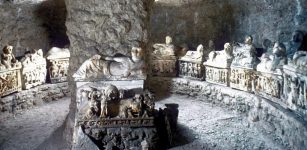 Image Of The Day: The Inghirami Tomb At Volterra, Italy
Image Of The Day | Sep 9, 2015
Image Of The Day: The Inghirami Tomb At Volterra, Italy
Image Of The Day | Sep 9, 2015 -
 Mysterious Great Underground City In The Jungle Inhabited By The Old Ones And Guarded By White-Skinned Indians
Featured Stories | Nov 12, 2017
Mysterious Great Underground City In The Jungle Inhabited By The Old Ones And Guarded By White-Skinned Indians
Featured Stories | Nov 12, 2017 -
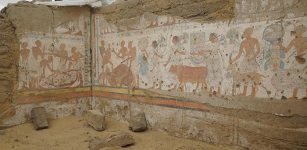 Tomb Of Pharaoh Ramesses II Treasurer Ptah-M-Wia Discovered In Saqqara
Archaeology | Nov 4, 2021
Tomb Of Pharaoh Ramesses II Treasurer Ptah-M-Wia Discovered In Saqqara
Archaeology | Nov 4, 2021 -
 Connection Between Alpha Draconis And Egyptians Pyramids Revealed
Archaeology | Jan 12, 2020
Connection Between Alpha Draconis And Egyptians Pyramids Revealed
Archaeology | Jan 12, 2020 -
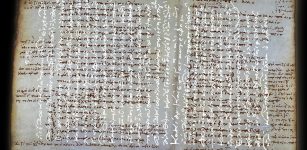 Spectacular Discovery – Scientists Decipher Previously Invisible Texts In Ancient Manuscripts
News | Nov 16, 2013
Spectacular Discovery – Scientists Decipher Previously Invisible Texts In Ancient Manuscripts
News | Nov 16, 2013 -
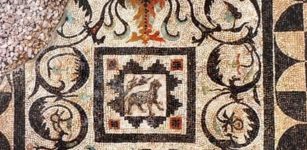 Beautiful Mosaic Dated To Graeco-Roman Times Discovered In Alexandria, Egypt
Archaeology | Jul 22, 2019
Beautiful Mosaic Dated To Graeco-Roman Times Discovered In Alexandria, Egypt
Archaeology | Jul 22, 2019 -
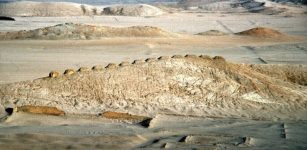 Mystery Of The Thirteen Towers Of Chankillo – Oldest ‘Full-Service Observatory’ In The Western Hemisphere
Featured Stories | Nov 6, 2018
Mystery Of The Thirteen Towers Of Chankillo – Oldest ‘Full-Service Observatory’ In The Western Hemisphere
Featured Stories | Nov 6, 2018 -
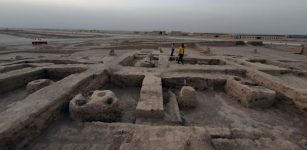 Ancient Parthian City With Hundreds Of Artifacts Unearthed In Iraq
Archaeology | Aug 16, 2022
Ancient Parthian City With Hundreds Of Artifacts Unearthed In Iraq
Archaeology | Aug 16, 2022 -
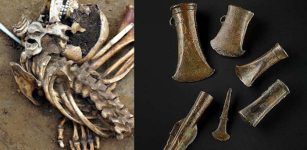 DNA Study Sheds New Light On Ancient Britain’s Language, Ancestry, Kinship, Milk
Archaeology | Dec 26, 2021
DNA Study Sheds New Light On Ancient Britain’s Language, Ancestry, Kinship, Milk
Archaeology | Dec 26, 2021 -
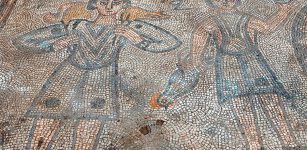 Mosaics Discovered In 1,600-Year-Old Church In Mardin Province,Turkey
Archaeology | Sep 22, 2020
Mosaics Discovered In 1,600-Year-Old Church In Mardin Province,Turkey
Archaeology | Sep 22, 2020 -
 Ancient City Of Isaura And Zengibar Castle Used By The Hittites, Persians, And Romans
Archaeology | Jun 25, 2020
Ancient City Of Isaura And Zengibar Castle Used By The Hittites, Persians, And Romans
Archaeology | Jun 25, 2020 -
 Graeae: Three Sisters Of Fate Who Shared One Eye And Tooth In Greek Mythology
Featured Stories | Jun 8, 2016
Graeae: Three Sisters Of Fate Who Shared One Eye And Tooth In Greek Mythology
Featured Stories | Jun 8, 2016 -
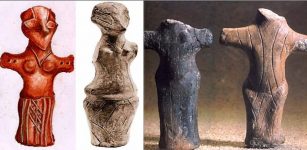 Mysterious Vinca Culture Is Among The Most Advanced Prehistoric Societies In Europe
Civilizations | Jun 23, 2020
Mysterious Vinca Culture Is Among The Most Advanced Prehistoric Societies In Europe
Civilizations | Jun 23, 2020 -
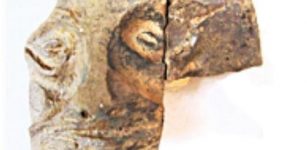 Satyr Mask Discovered In Ancient Greek Emporium Pistiros In Thracians’ Odrysian Kingdom Near Bulgaria’s Vetren
Civilizations | Sep 22, 2015
Satyr Mask Discovered In Ancient Greek Emporium Pistiros In Thracians’ Odrysian Kingdom Near Bulgaria’s Vetren
Civilizations | Sep 22, 2015 -
 Samurai – Powerful Skilled Warriors Who Loved Music, Art And Poetry
Featured Stories | Dec 9, 2017
Samurai – Powerful Skilled Warriors Who Loved Music, Art And Poetry
Featured Stories | Dec 9, 2017 -
 100,000-Year-Old Case Of Deafness Discovered In Fossilized Skull Of Hunter-Gatherer
Archaeology | Jul 21, 2022
100,000-Year-Old Case Of Deafness Discovered In Fossilized Skull Of Hunter-Gatherer
Archaeology | Jul 21, 2022 -
 3D Scans Reveal Secrets Of Rare Ancient Canoe From Lake Mendota In Wisconsin
Archaeology | Jun 3, 2022
3D Scans Reveal Secrets Of Rare Ancient Canoe From Lake Mendota In Wisconsin
Archaeology | Jun 3, 2022 -
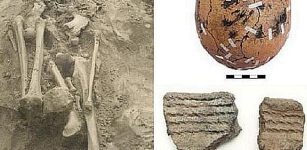 Eastern Baltic’s Communities Of First Farmers And Hunter-Gatherers Merged Slowly
Archaeology | Dec 10, 2023
Eastern Baltic’s Communities Of First Farmers And Hunter-Gatherers Merged Slowly
Archaeology | Dec 10, 2023 -
 Knowledge Of Divine Alien Beings And High-Tech In Ancient Egypt Described In Sacred Books And Papyrus – Reincarnation, Cloaking Technology And Space Travel – Part 2
Featured Stories | May 16, 2021
Knowledge Of Divine Alien Beings And High-Tech In Ancient Egypt Described In Sacred Books And Papyrus – Reincarnation, Cloaking Technology And Space Travel – Part 2
Featured Stories | May 16, 2021

